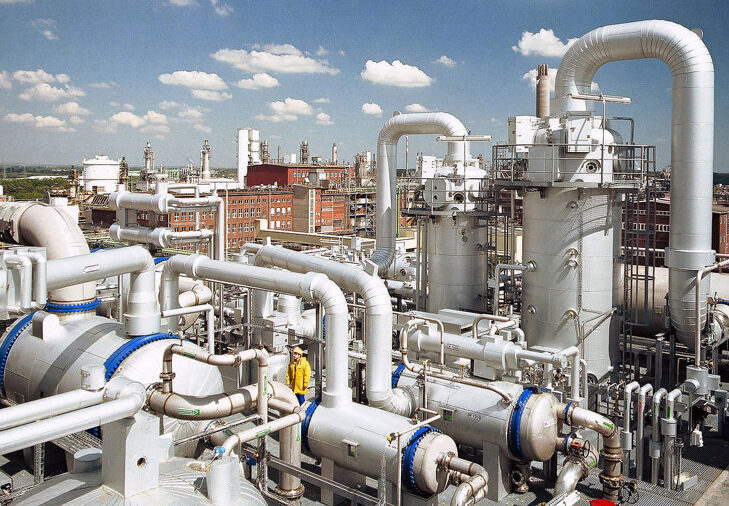
Sustainability is the industry’s innovation driver
If I asked you, what is the number one driver of innovation in our industry today, what would you say?
For German chemical company BASF, the answer is beyond doubt. The company is convinced sustainability is the principal avant-gardist in the global fuel and lubricant industries. Undeniably, environmental regulations and governmental programs are increasing the relevance of sustainability and fast-tracking development of new powertrain technologies and industrial equipment.
Speaking at the SAE International Powertrains, Fuels and Lubricants Meeting in Heidelberg, Germany, on 17-19 September 2018, the Director of Marketing for Base Fluids and Metalworking at BASF, Markus Scherer, outlined how sustainability is impelling mobility trends which demand new fuels, new lubricants, and lubricant and fuel additives.

Scherer’s presentation, entitled “Sustainability as an innovation driver for novel fuel and lubricant components,” identified two “clusters” dominating mobility trends — emission standards and energy efficiency. The University of Cologne graduate also emphasised that the standards themselves are becoming increasingly stringent as test cycles shift from the laboratory to monitoring under real-life driving conditions.
Consequently, OEMs are ramping up their electrification efforts. We are beginning to see a broadening portfolio of electric vehicles and billion-dollar investments in new powertrain technology. Electric vehicles will have moved beyond the “early adoption stage” by 2020-2024 timeframe and will be approaching mass consumer acceptance, according to Scherer. Hybrid vehicles provide a bridge technology to aide in the transition to battery electric vehicles.
Scherer predicts 10- 15% of the total car fleet will be fully electrical by 2030, while almost 30% of produced vehicles in 2030 will be electrical. Though, Scherer acknowledges the role of some “very interesting fuel additive technologies” in maintaining the sustainability of conventional applications.
Sustainability provides the ability to differentiate in the marketplace while fulfilling stricter regulations and climate targets, suggests Scherer. “A constant need for innovation in chemistry and formulation will continue to provide opportunities” in both new and existing powertrain technologies.

BASF is the largest chemical producer in the world with 115,000 employees, six integrated production sites and 390 other production sites across Europe, Asia, Australia, the Americas and Africa. BASF is motivated to contribute “heavily” in developing novel concepts for new and existing powertrains, says Scherer.
The changing requirements of fuels and lubricants beyond 2020 are a “big challenge for the chemical industry.” Scherer elaborated on how the chemical industry in the fuels and lubricants fields must adapt to support sustainability trends.
Fuel additives will continue to play a major role in the ongoing viability of the internal combustion engine, he says. Intelligent fuel additives will attempt to minimise emissions with effective deposit control in modern injection engines. Fuel additives will also play a vital role in fuel stability by controlling the oxidation of fuel — particularly with new alternative fuels such as biofuels. Scherer highlighted new gasoline direct injection deposit control additives from BASF’s innovation pipeline — specially tailored to prevent injector coking, with the ability to clean up nozzles more effectively than before. This will keep particulate emissions at a minimum level, he says.
Driveline and engine lubricants will also underpin sustainability trends with component solutions driven by efficiency and drain intervals. Key considerations are lower oil volumes, increases in sump temperatures, higher power densities in modern engines, and new gearboxes that will impose heat stress on lubricants. Additionally, battery electric vehicles (BEV) and fuel cell electric vehicles (FCEV) will require new and design-specific lubricants, greases and components.

Oil specifications are increasingly moving towards lower viscosity oils with a necessary increase in stability at higher temperatures. Scherer acknowledged the trend to ultra-low viscosity as a “very specific challenge” for the chemical industry. Japan is leading the charge with a move towards 0W-8 oils and a desire for even lower viscosities. These levels would not have even been considered two decades ago.
However, Scherer believes this is an area where the industry can really contribute. It appears that 0W-8 or lower viscosities are not possible using conventional base oils. Even PAO, one of the best synthetic base stocks available, is not suitable for ultra-low viscosity engine oils, says Scherer. Novel base stocks to meet future ultra-low viscosity engine oil specifications are required. We need new concepts, new chemistries to formulate these oils, he says.
Further, new base stocks need to be available in large quantities with more attractive prices, he says. The BASF representative believes ester base stock technology could satisfy future engine oil requirements for low viscosity and low volatility targets.
During his presentation, Scherer also highlighted novel additive technologies designed to improve fuel economy — in response to the growing use of fuel economy in marketing claims from OEMs. One such technology is the development of ashless friction modifiers for the latest engine generations.
When it comes to coolants, volumes will be similar to today, on average, with volume dictated by vehicle size. However, Scherer advises that conventional coolants will be unsuitable for future vehicles with target cooling temperatures that are significantly lower. Target cooling temperatures for internal combustion engines are 100-120°C. Fuel cell electric vehicles (FCEV) require a slightly lower 90-100°C, whereas battery electric vehicles (BEVs) necessitate a temperature of 45°C to operate the battery in an efficient manner. We believe the coolants area, especially for BEV and FCEV, needs totally new cooling concepts, says Scherer.
Scherer will be discussing the mobility trends changing the requirements for fuels and lubricants, and how the chemical industry can support these changes with innovative concepts, in more detail at F+L Week 2019 on 6 March 2019 at the Grand Hyatt Singapore.







